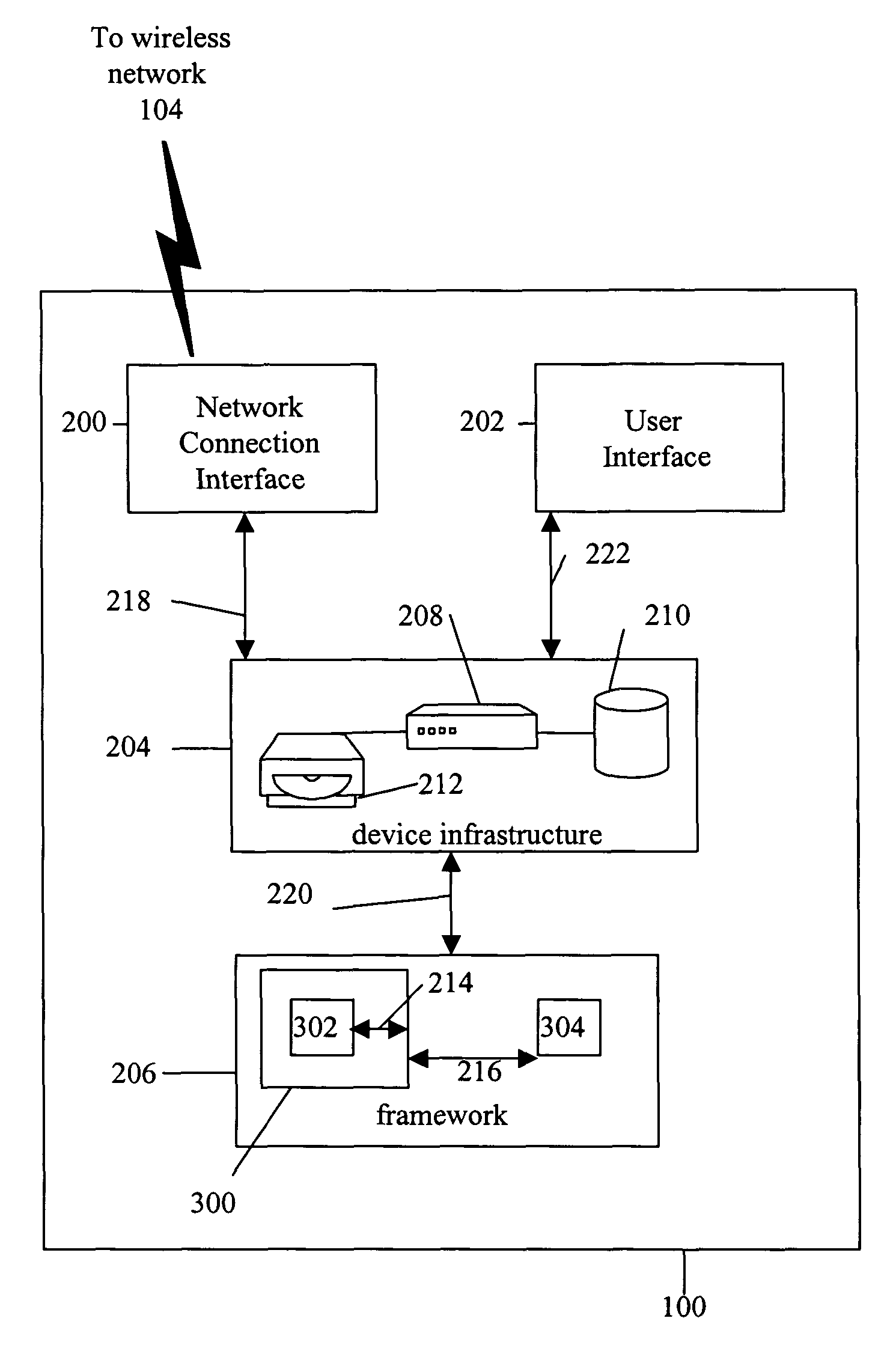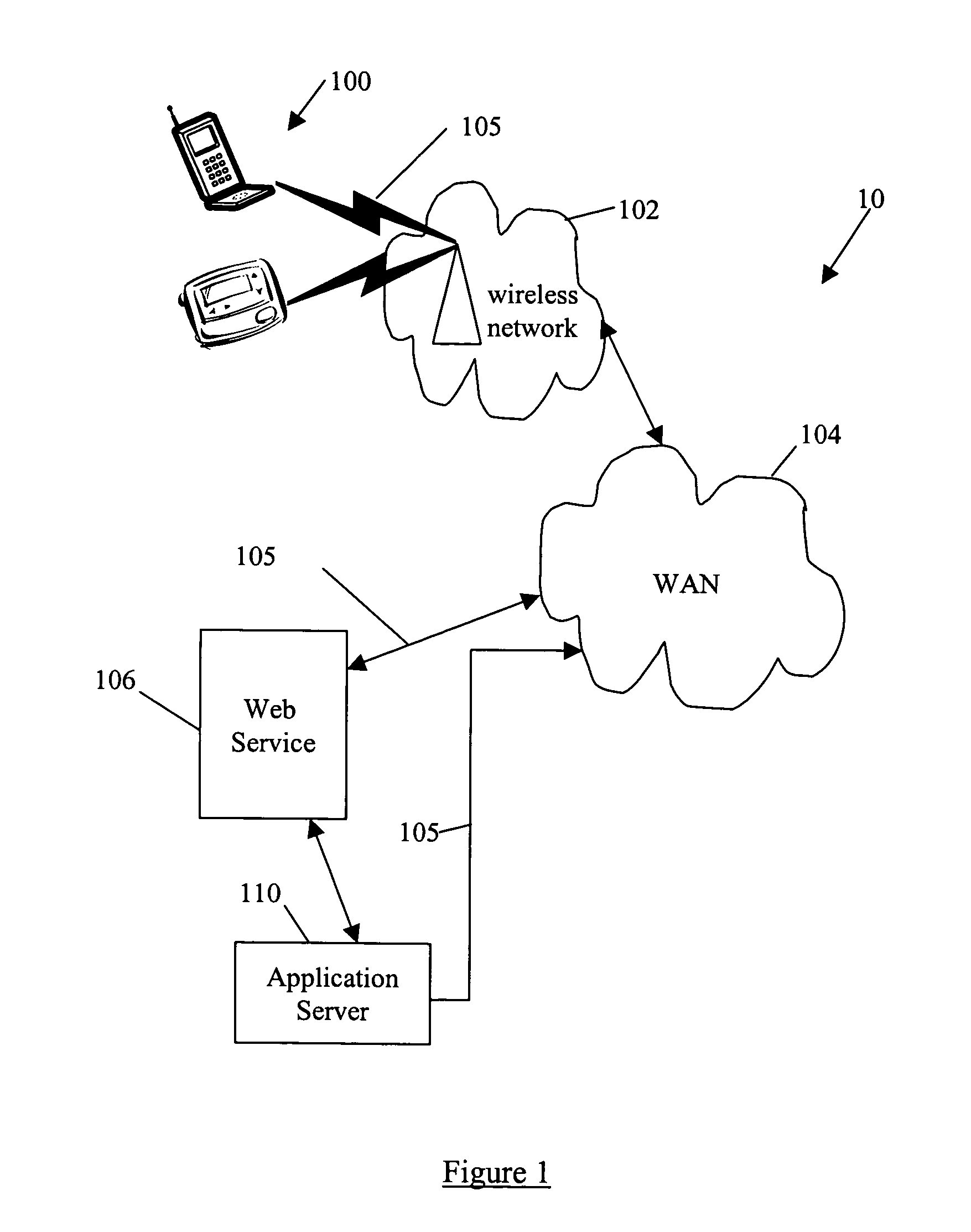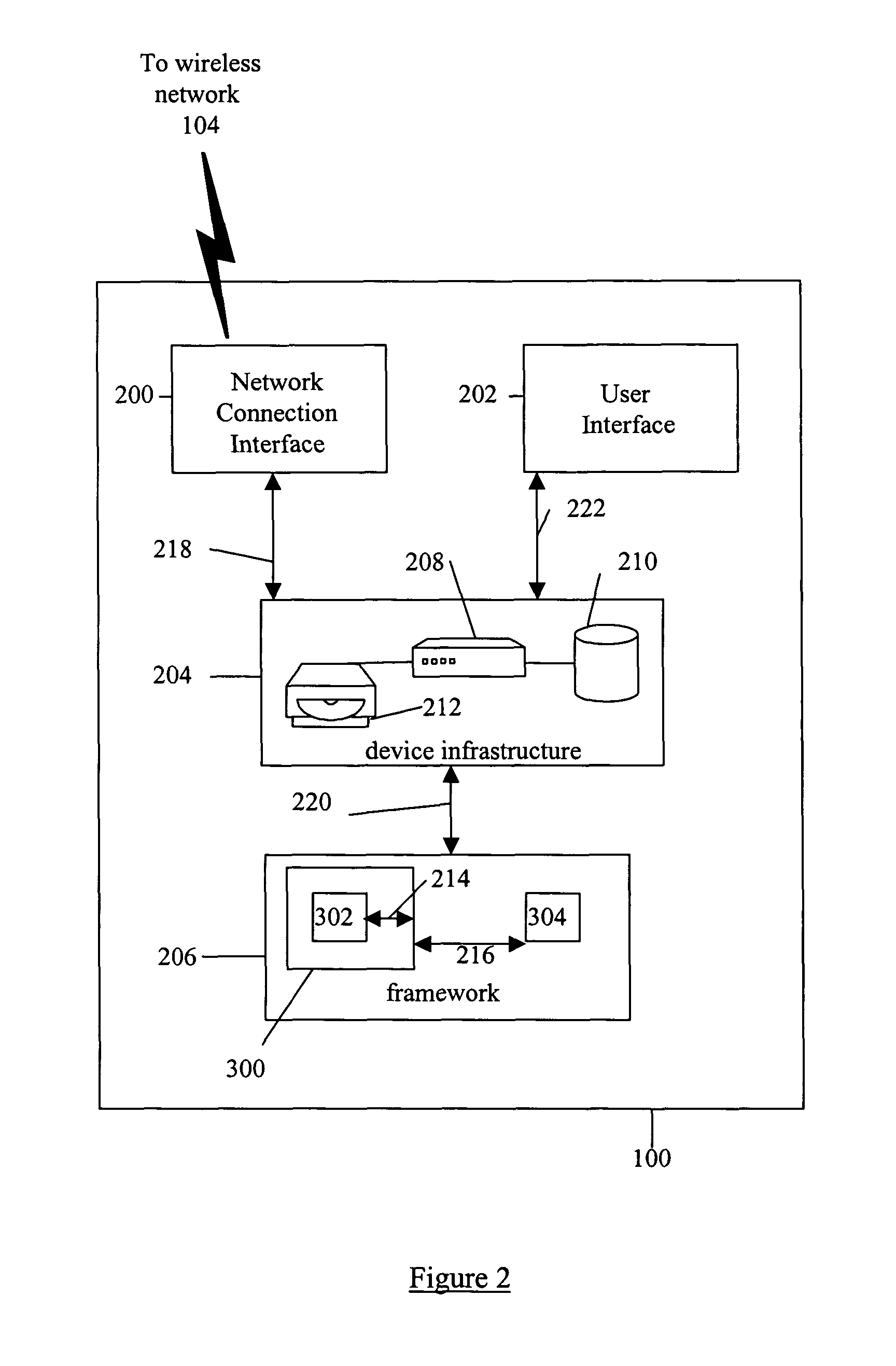System and method for building wireless applications with intelligent mapping between user interface and data components
a wireless application and data component technology, applied in the direction of user interface execution, multi-programming arrangement, instruments, etc., can solve the problems of affecting the development process, affecting the persistence of data contained in the screen, and consuming time, so as to reduce the use of device resources, simplify the development effort, and reduce the complexity of the development process
- Summary
- Abstract
- Description
- Claims
- Application Information
AI Technical Summary
Benefits of technology
Problems solved by technology
Method used
Image
Examples
example basic
OPERATION OF A COMPONENT BASED APPLICATION MODEL
[0078]It should be noted that the operation detailing processing mappings 804 is described with reference to FIGS. 9, 10, and 11 below.
[0079]Referring to FIGS. 1, 3 and 6, for example, operation 600 shows when the device 100 receives 602 the response message 105 containing message data, the appropriate workflow component 406 interprets 604 the data content of the message 105 according to the appropriate message component 404. The workflow component 406 then processes 606 the data content and inserts 910 the data into the corresponding data component 400 for subsequent storage 612 in the memory module 210 (see FIG. 2). Further, if needed, the workflow component 406 also inserts 608 the data into the appropriate presentation component 402 for subsequent display 614 on the user interface 202 (see FIG. 2).
[0080]Referring to FIGS. 1, 3 and 7 operation 700 shows data input 702 for an action, such as pushing a button or selecting a menu item,...
PUM
 Login to View More
Login to View More Abstract
Description
Claims
Application Information
 Login to View More
Login to View More - R&D
- Intellectual Property
- Life Sciences
- Materials
- Tech Scout
- Unparalleled Data Quality
- Higher Quality Content
- 60% Fewer Hallucinations
Browse by: Latest US Patents, China's latest patents, Technical Efficacy Thesaurus, Application Domain, Technology Topic, Popular Technical Reports.
© 2025 PatSnap. All rights reserved.Legal|Privacy policy|Modern Slavery Act Transparency Statement|Sitemap|About US| Contact US: help@patsnap.com



